The Adelaide Botanic Garden is a tranquil retreat on the north-eastern corner of the CBD and is a much-loved refuge for visitors and locals alike. It occupies 51 hectares of land between North Terrace and Botanic Park (north/south) and between the Royal Adelaide Hospital and Hackney Road (east/west). There are entrances to the garden from North Terrace, Hackney Road, Plane Tree Drive and the park area adjacent to Frome Road. Plantings in the garden reflect all periods of its development from the mid-1850s to the present and there are also some notable heritage structures. These include the 1875 glasshouse known as the Palm House, and the Museum of Economic Botany, built in 1881. The administrative centre of the garden is housed in the 1909 Goodman Building, the former headquarters of the Municipal Tramways Trust, located near the Hackney Road entrance . Next door is the Herbarium, housed in a converted Tram Barn.
Early History
Provision for a public garden was made by Surveyor General Colonel William Light in his 1837 plan for Adelaide. Many believed at this time that access to public open space was an important factor in maintaining healthy cities and that public recreational gardens were markers of civilized societies. Light marked out a space for the garden near the Torrens in what is now the West Parklands, but the area was subject to flooding and early attempts to establish a garden had to be abandoned. A second attempt also failed. Attention shifted to the northern bank of the Torrens opposite the present location of the Adelaide Zoo and here, in 1839, an experienced gardener by the name of John Bailey (who also described himself as ‘Colonial Botanist’) made a third attempt. This garden was more successful, but by then the colonial purse was empty and the funds needed to sustain the garden were not forthcoming.
However influential groups within South Australia continued to press for the creation of a public garden. They included the South Australian Agricultural and Horticultural Society (formed in 1842), which in 1854 recommended the present site to the government. A superintendant of the garden, one George William Francis, was appointed in 1855. Francis was an enthusiastic botanist and author who migrated to South Australia in 1849 and almost immediately began campaigning for the creation of a botanic garden. His vision for the garden can still be seen in such major features as the Main Walk, which bisects the garden from north to south and the various waterways, devised both for aesthetic appeal and to deal with the swampy tendency of low-lying land. A set of fine iron gates was purchased for the North Terrace entry. Plantings included large numbers of exotic species, but Francis was also an active collector of Australian plants and created a specific section for Australian flora. He established wide links with other botanists both in Australia and overseas, exchanging seeds and plants. His garden opened to the public in October 1857 and met with general approval. In September 1859 the local newspaper (the South Australian Advertiser) decided that ‘on the whole, the Botanical Gardens afford delightful means of both recreation and instruction’. This early garden did not, however, include the sweeping expanses of lawn we now associate with the Adelaide Botanic Garden. There was, simply, no means of watering them until North Terrace was connected to the new reticulated water supply in December 1860. But with water on tap, came the realization of another dream for the garden – the installation of a large fountain as a feature on the main path. The Owen Fountain (named for its benefactor) was turned on in November 1861, to the general gratification of all present. Every botanical garden of note required a fountain!
Animals and more structures
A botanical garden also requried animals it seems, and Francis set about acquiring them to further interest his public. Within a surprisingly short space of time he had accumulated a veritable Noah’s Ark, and like that biblical character he preferred to collect most of them in single pairs. Writing in the local press in the early 1860s he summarized the animal acquisitions: ‘At present we are content with one pair of animals of each species, except water fowl, parrots, and small birds, of which we desire more. We have now a sufficiency of eagles, owls, emus, hawks, cape barren geese, wallabies, plovers, native pheasants, native cats, opossums, magpies, doves, and common pigeons. Shall be glad of a male kangaroo rat, a female wombat, and any animals not mentioned above, particularly birds.’ In 1864 he acquired a badger and a bear from London’s Zoological Society, this last necessitating an immediate increase of sixpence per day in the food allowance! The animals continued to be a feature of the Botanic Garden until 1883 when the Adelaide Zoological Gardens opened on a section of Botanic Park.
The 1860s also saw more structures added to the gardens – a pagoda (1863) and a rustic temple (1864), modelled on the Parthenon of Athens no less. The temple was intended to be a botanical museum, lecture room and herbarium, based on the model of the Museum of Economic Botany at Kew. All of these elements contributed to the intended aim of ‘rational’ enjoyment and improvement to public health and taste.
Dr Richard Schomburgk
Francis was succeeded on his death in 1865 by Dr Richard Schomburgk, a gardener, botanist and author in Berlin before the failed 1848 revolutions and subsequent crackdown on suspected democrats in Germany prompted his migration to South Australia. He arrived in 1849 and spent the next 16 years farming and gardening near Gawler. Schomburgk was well connected in scientific circles, both locally and in Europe (he was an associate of the eminent Alexander von Humboldt in Berlin), and he put these to good use in his work at the Garden. Amongst his early projects were a reorganization of the herbarium, the creation of an experimental garden for ‘medicinal, industrial and fodder plants’ and a new rose garden. He also created a new ‘system’ garden, in which plants were laid out according to their botanical classification, in the hopes of encouraging more interest in botany. The much-loved avenue of Moreton Bay figs that lines the main path from Plane Tree Drive was planted by Schomburgk in 1866, reminiscent perhaps of some of the German gardens he remembered from his youth.
One of Schombergk’s popular successes was the creation of the Victoria House designed to house a giant waterlily Victoria regia (now Victoria amazonica). He and his brother had seen and described this species on an early expedition to British Guiana, but he had no experience of trying to grow it. It was a gamble that paid off. The first flowering of the waterlily in 1868, described enthusiastically in the press as ‘this magnificent queen of acquatics’, caused a great stir and prompted 30,000 visits to the gardens over a four week period. Another legacy is the Palm House. By the early 1870s Schomburgk was lamenting the crowded state of the existing palm house and proposing a larger, more imposing structure based on an example he knew from Bremen. His eloquence prevailed and a new prefabricated iron and glass palm house arrived at the gardens in August 1875. Such glasshouses reflected advances in the technology of glass and iron construction in the 19th century and in improved techniques of heating and ventilation. They were popular installations in many botanical gardens from the 1840s, but many were victims of fire, breakage or war in the 20th century. Others were demolished because of maintenance costs. Pauline Payne has argued that Adelaide’s Old Palm House is the ‘finest Victorian glasshouse remaining in Australia’ and perhaps the only surviving example of German cast iron/wrought iron conservatory architecture. Although the nature of the planting has changed since Schomburgk’s time, the structure itself is still a much-loved feature of the garden.
Schomburgk was particularly interested in tree plantings in the garden and his canvas expanded still further when what is now known as Botanic Park (formerly the Police Paddock) passed to his administration. He planned a landscape garden and arboretum with a carriage drive lined with shady trees and wide expanses of grassed areas. European and North American forest species predominate, with yet more Moreton Bay figs and other Australian species. Most of these survived, although watering the trees through some exceptionally hot summers, with temperatures ranging between 35 and 45 degrees C, was a considerable challenge. Heat was not the only problem however. To Schomburgk’s dismay vandalism was also a problem both in the Garden itself and in the Botanic Park. Such ‘vulgar practice’ as name carving distressed him, as did the ‘grave annoyance of writing indecent sentences on the pedestals of the statues’. He had no doubt that the culprits were the ‘roughs, and unruly boys who kill their time by frequenting the Garden more than I wish for, and who also on every opportunity show disobedience to orders, and insolence to the men when reprimanded.’ (Payne, ‘Picturesque’, note 34). But they were not the only miscreants. Others who should have known better were not averse to a bit of plant theft, or ‘indecorous conduct’. From 1868 a detective was employed, but he had his work cut out. Visitors persisted in picking the flowers, walking on the grass, smoking in the gardens, trying to bring in perambulators and generally disregarding the regulations. They tried the good doctor sorely.
Museum of Economic Botany
The last major construction of the Schomburgk era was the present form of the Museum of Economic Botany. By the 1870s the original museum building was judged far too small to house the exhibits, many of which were held in storage where they were subject to damp and termite damage. Once again Schomburgk prevailed and the new building was completed in 1881, based on the model of the museum at Kew. Built in the classical style and designed by Government Architect-in-Chief E J Woods, the museum housed both exhibits of plant products and the herbarium. A notable inclusion was an exhibition on plants used by Aboriginal people near Darwin for food, drink and medicines – an early and unusual acknowledgement of Aboriginal plant knowledge. Also at this time the garden acquired the present ornate gates that grace the North Terrace entrance. Schomburgk died in office in 1891 at the age of 80.
Another German-trained gardener, Maurice Holtze, succeeded Schomburgk. He faced far more straightened financial circumstances than his predecessor, as the 1890s depression took hold in the state, but he was able to preserve most of the plantings. He also relaxed some of the more onerous rules – allowing perambulators on the paths, and removing the ban on gentlemen entering the gardens with flowers in their buttonholes. (It was thought previously that if buttonholes were allowed it would be impossible to distinguish surreptitious flower pickers from virtuous visitors.) His was also a lengthy stewardship: he finally retired in March 1917 at the age of 77.
The Twentieth Century
Successive directors worked hard to try to preserve the gardens, but chafed at lack of funding. The area of the gardens under lawn increased substantially, since this was easier to maintain: the number and complexity of flower beds decreased as the numbers of garden staff dwindled. It was not until the end of the Second World War and the advent of an ambitious young director, Noel Lothian, that the gardens’ fortunes revived. Lothian was to serve as director for a further lengthy term – from 1948 until 1980- and his clear goal was to remake the gardens on an ‘International basis’. This encompassed everything from reinstating the importance of the science of botany and the herbarium, to replacing outmoded plantings and gardening equipment. (The horse-drawn lawn mowers were dispensed with promptly.) Lothian championed experimental tree plantations for rural and suburban plantings. He also encouraged a new interest in plants from South Australia’s arid zones. And as the centenary of the gardens approached, Lothian began to reconstitute the herbarium, whose collections and functions had been dispersed in previous decades between the gardens, the University of Adelaide and the SA Museum.
In the 1960s and seventies elements of modernist garden design were implemented at the gardens. A Western Wild Garden was created in the mid-sixties and the main lake extensively re-designed. Training programs expanded too, now including women professional employees as well as men. The first female trainees were accepted in 1956, joining what had been an all-male preserve for the first century of operation. Only one woman had served on the Board until that point – Edith Osborne from 1915-28.
More recent additions to the gardens include a Mediterannean Garden (following an earlier experiment with a formal Italianate garden), a second wisteria arbour to complement the hugely popular arbour created in about 1920, and a large trial rose garden. An emphasis on sustainable gardening and landscape design informs policy direction.


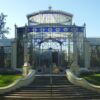

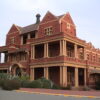

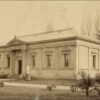
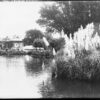
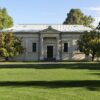
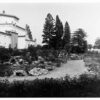

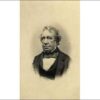

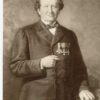
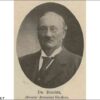

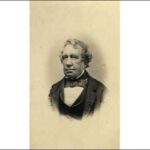
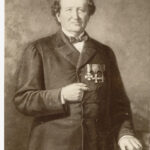
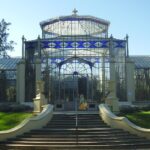
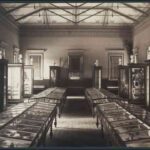
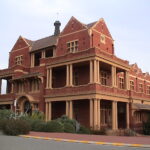
Comments
19 responses to “Adelaide Botanic Garden”
I was wondering if you would have any accessible information on the Head Gardener a John Rankine c. 1860-1875. My husbands GGGrandfather. Look forward to hearing from you. Kind regards. Jacquie
Hi Jacquie, I’ve had a hunt and unfortunately it doesn’t look like we have much on him on file. You could refer to one of the sources for this article – Aitken, Richard, Seeds of Change: An Illustrated History of the Adelaide Botanic Garden (Adelaide: Board of the Botanic Gardens and State Herbarium, 2006) – or you might try contacting the Botanic Garden to see if anyone there can point you in the right direction. You might also try the State Library & State Records. Good luck!
Hi Catherine. Thank you for your reply. You say not much in file. What do you have on file on him? I’ve been researching him for 20 odd years and so have others so any info is greatly appreciated. xx
Everything we have access to is listed in the sources and media of this web page, I’ve e-mailed you a summary for reference.
I’m looking for information please on my great grandfather – William Mobsby. He was apparently a head gardener.
I would suggest searching the archives at State Records Sue: https://www.archives.sa.gov.au/ He also appears to have been a member of the South Australian Gardeners’ Society, and there are some papers published by him held at the State Library of South Australia: http://www.slsa.sa.gov.au/
I am researching Nicholas Thomas Mauger, a native of Guernsey and an experienced gardener. Nicholas arrived in Adelaide in 1874. His obituary in 1933 stated he had been involved in the laying out of the present gardens. Any information regarding Nicholas and his involvement would be greatly appreciated. Regards, Lynne.
I’m afraid I can’t find any information on Mauger on file here Lynne. Have you already tried State Records? I think they would be the best starting place.
Lynne,
Send me an email and I will be able to help you. I am Nicholas’ great grandson. My grandmother was Amy Louisa Mauger,
Peter
My first husband’s great great grandfather was George William Francis, and later a cousin of my father, surname Haskett, worked as a gardener and lived in the house near Botanic Park. In the late 1940’s early 50’s my grandfather, Senator Jack Critchley, was one of the many politicians who addressed the crowds at the Speaker’s Corner, when I was four years old.
I would like to know if the original plans for the Botanic Gardens included much of what became the site for the then Royal Adelaide Hospital?
Hi Colleen, the planned location for the Botanic Gardens was changed several times, as outlined above, but the site suggested in 1851 by the South Australian Agricultural and Horticultural Society did include a significant area that became the hospital. For more see:
Aitken, Richard, Seeds of Change: An Illustrated History of the Adelaide Botanic Garden (Adelaide: Board of the Botanic Gardens and State Herbarium, 2006)
https://encore.slsa.sa.gov.au/iii/encore/record/C__Rb1641397__SSeeds%20o…
It is a great pity that reference was not made to the scholarly role of the State Herbarium under the leadership of Drs Eichler and Jessop as Chief Botanists. The quality and volume of taxonomic botanical publications was remarkable.
The acquisition of the Hackney Depot site also made possible the construction of the award winning Bicentennial Conservatory, as well as reutilising the heritage listed Goodman Building and adjacent Tram Barn. The restoration of the Old Palm House, Museum of Economic Botany, rejuvenation of Botanic Park and restoration of many garden features, statues and fountains were all undertaken in the last quarter of the 20 th century. The Friends of the Botanic Gardens of Adelaide were also the first to be formed in any Australian botanic garden .
Thanks for adding that detail Brian.
Hello Catherine,
I was wondering if you could pass on my email to Colleen Buchan. Her first husbands GGGrandfather being George William Francis & my husbands GGGrandfather being his first Head Gardener of Adelaide Botanic Gardens. She may have some info I could draw on.
Kind regards. Jacquie
I will do Jacquie,
best of luck researching your family history.
Today, during a tour of the West Terrace Cemetery, the guide took us to the grave of George Francis, and happened to mention that his monkey was buried in the Gardens. Can you tell me where that would be?
That’s a new one to me June, but someone at the Adelaide Botanic Gardens may know – https://www.botanicgardens.sa.gov.au/home
Wonderful to see reference to George Francis, my forebear too. Perhaps explains my love and fascination with gardening! Many years ago, I had the joy of attending a wedding in the newly renovated herbarium, and the pleasure of strolling the gardens. I can’t resist visiting gardens in every country I have visited. Thank you for sharing the Adelaide Gardens history.
That’s an impressive family history Jane, glad you found the article interesting.